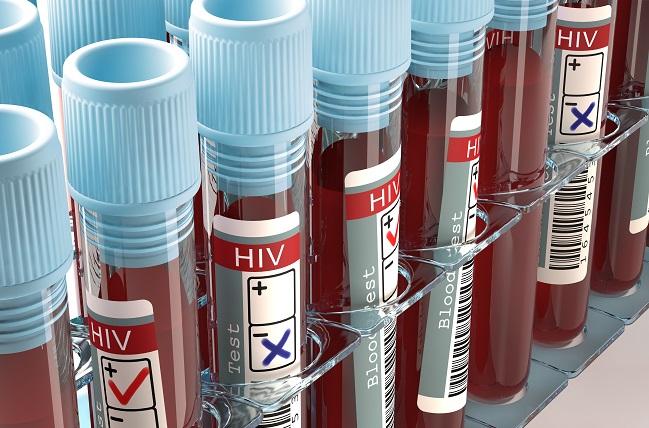HIV-Positive Patients Face Elevated Rate of Type 2 MI
The manifold causes for these events—most notably bacteremia or sepsis and recent drug use—present windows for prevention, one researcher says.

Building on prior research showing that heart disease manifests itself differently in people with HIV than in the general population, a new study of US patients is showing that type 2 MIs—typically quite rare—make up half of the heart attacks experienced by those who are HIV-positive.
One-third of these type 2 MIs were caused by sepsis or bacteremia, researchers found, and more than one in 10 cases were related to recent use of cocaine or other drugs.
Clarity on demographic characteristics and cardiovascular risk factors in this subpopulation will enable improved prevention efforts, said lead author Heidi M. Crane, MD, MPH (University of Washington, Seattle), whose study was published online last week JAMA Cardiology.
“It doesn’t suggest traditional cardiovascular risk factors don’t have a [role] in prevention,” she told TCTMD. What it does suggest, is that other tactics—like discouraging smoking and drug use and encouraging earlier HIV treatment—might be useful in this population. “We need to better understand the types and what’s causing and predicting these events if we really want to have an impact on what’s clearly an important cause of morbidity and mortality among these patients,” Crane said.
Myriad reasons exist for why ischemic heart disease often accompanies HIV. As noted in a recent review on the topic published in the Journal of the American College of Cardiology, “CAD in HIV-infected patients is the result of a number of interactions causing inflammation, endothelial dysfunction, and coagulation disorders, ultimately leading to atherosclerosis.”
Moreover, the same antiretroviral therapies that have been so instrumental in increasing survival of HIV-positive individuals can cause dyslipidemia, insulin resistance, and the aforementioned endothelial dysfunction, write senior author Pravin Manga, MBBCh, PhD (University of Witwatersrand, Houghton, South Africa), and his co-authors in their summary of the field.
Yet they note that of the 37 million people in the world with HIV, 70% live in sub-Saharan Africa, a point that Crane acknowledged should factor into interpreting her own research, which was conducted at US academic medical centers. “[Our study] is really trying to understand what’s going on in the US, where these patients are typically getting treated for HIV,” she explained.
Half of MIs Classified as Type 2
For their longitudinal study, Crane and colleagues assessed potential MIs in a cohort of nearly 27,000 HIV-positive patients treated at six US hospitals between January 1, 1996, and March 1, 2014. Among them, 571 were found to have experienced definite or probable MI: 49.6% were classified as type 1 and 50.4% were type 2 according to the Second Universal Definition of Myocardial Infarction.
The type 2 MIs arose from various clinical conditions. Chief among them were sepsis or bacteremia (34.7%), recent use of cocaine or other drugs (13.5%), and hypertensive emergency (9.7%). Other type 2 MIs could be traced to respiratory failure, noncoronary cardiac conditions, hypotension, noncardiac procedures, gastrointestinal bleeding, neurologic causes, overdose, anemia, and rhabdomyolysis.
Compared with the type 1 MI patients and those who underwent cardiac interventions, HIV-positive individuals with type 2 MI tended to be younger than 40 years and to have lower CD4 cell counts, total cholesterol levels, and mean Framingham risk scores.
Moving Beyond Traditional CV Risk Factors
To TCTMD, Crane said that she and her colleagues embarked on this study out of “concern that type 2 MIs were being undercaptured [and] underaddressed in HIV. Certainly that hypothesis was proven to be true. I think most people are surprised at just what a big issue it is.”
Rather than offering lessons about how these type 2 MI patients should be managed, the findings speak to the role of prevention, she explained. “How do we prevent MIs in patients with HIV? And do we need slightly different approaches than what’s done in the general population, where the proportion of type 1s to type 2s is so much different?”
Earlier treatment of HIV that leads to higher CD4 count and lower viral load would reduce the risk of sepsis, for example, and might thereby reduce the odds of type 2 MI, Crane suggested. “Typically in the general population when you’re thinking about trying to prevent MIs, you think about things like statins and blood pressure control and the traditional cardiovascular risk factors,” she noted. “I think the implication from this paper is that we need to have a much broader repertoire of prevention approaches in patients with HIV."
Another area of current research, Crane said, is how the breakdown of MI type might affect survival. Her group is looking into the heightened mortality risk seen among HIV-positive patients after type 2 versus type 1 MI.
Caitlin E. Cox is News Editor of TCTMD and Associate Director, Editorial Content at the Cardiovascular Research Foundation. She produces the…
Read Full BioSources
Crane HM, Paramsothy P, Drozd DR, et al. Types of myocardial infarction among human immunodeficiency virus-infected individuals in the United States. JAMA Cardiol. 2017;Epub ahead of print.
Vachiat A, McCutcheon K, Tsabedze N, et al. HIV and ischemic heart disease. J Am Coll Cardiol. 2017;69:73-82.
Disclosures
- The study was supported by grants from the National Institutes of Health and grant-in-aid from the American Heart Association.
- Crane and Manga report no relevant conflicts of interest.


Comments